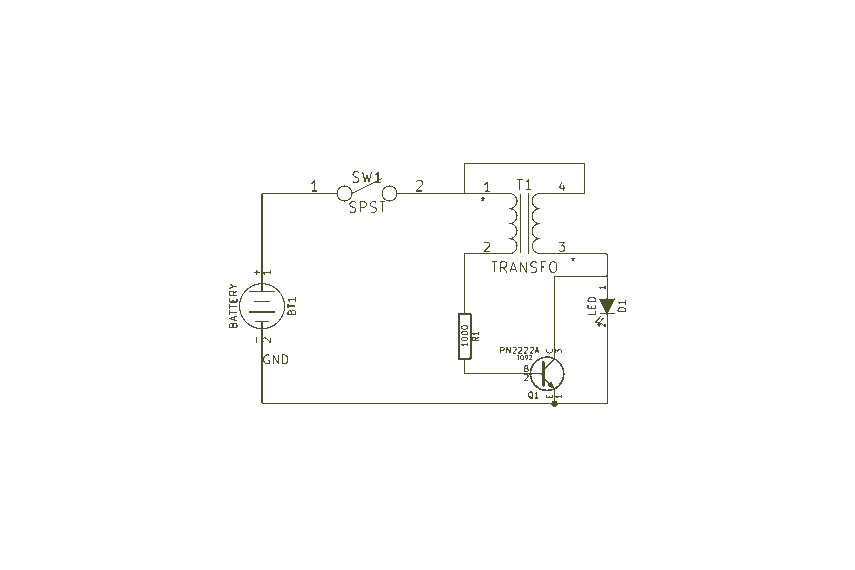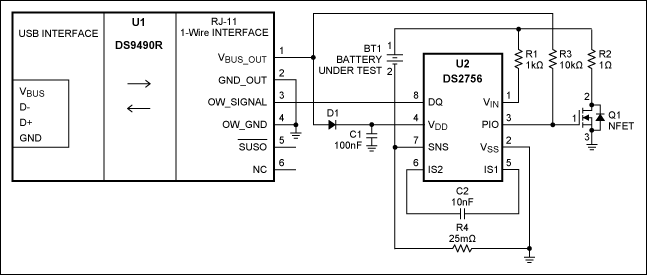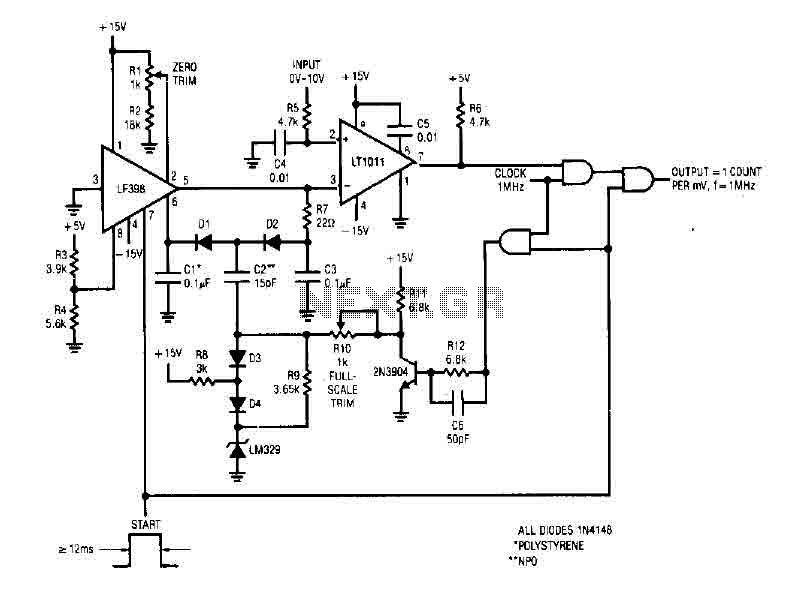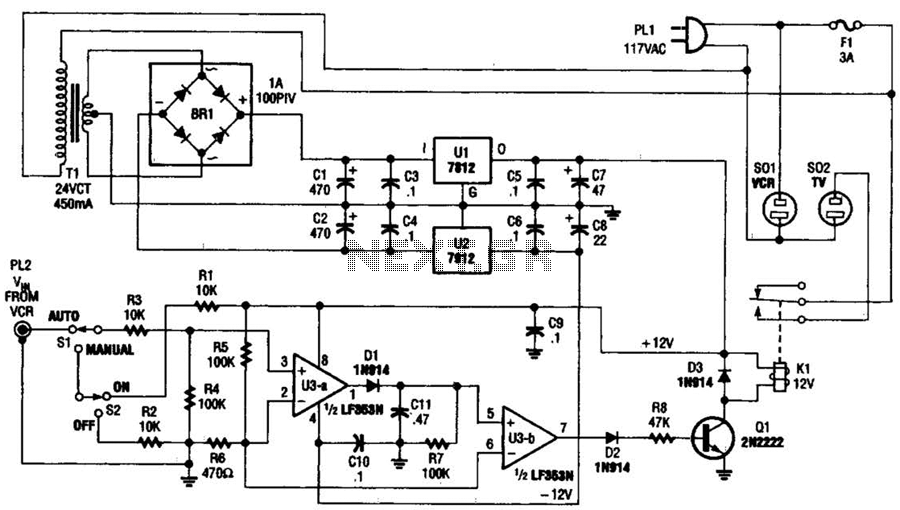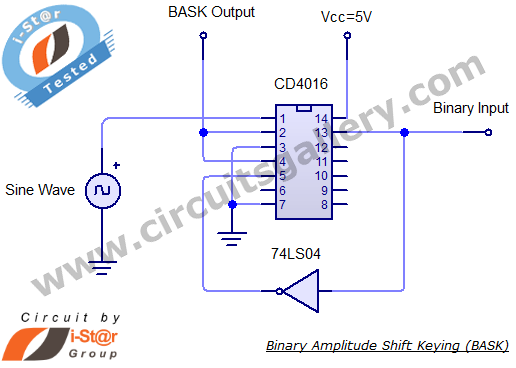
Stereo Encoder Circuit

This simple stereo encoder circuit schematic is built with two ICs, MMC4066E and MMC4047, along with one transistor, BC547B. The audio output is taken from pins 2 and 3 of IC1.
The stereo encoder circuit utilizes the MMC4066E, which is a quad bilateral switch, to manage the audio signals effectively. This IC is responsible for switching the audio channels, allowing for the separation of left and right audio signals, essential for stereo sound. The MMC4047, on the other hand, functions as a timing and frequency generation IC, which can facilitate the modulation of the audio signals for encoding purposes.
The BC547B transistor serves as a buffer or amplifier in the circuit, ensuring that the output signals maintain their integrity and strength when transmitted to the subsequent stages or to the output device. The configuration of these components allows for a compact and efficient stereo encoding solution suitable for various audio applications.
In a typical setup, the audio inputs are fed into the MMC4066E, where they are processed and switched according to the control signals provided by the MMC4047. The output from the MMC4066E is then amplified by the BC547B, ensuring that the final stereo output is clear and powerful enough for driving speakers or other audio devices. Proper power supply decoupling and grounding techniques should be employed to minimize noise and ensure stable operation of the circuit.This simple stereo encoder circuit schematic is build with 2 IC MMC4066E and MMC4047 and one transistor BC547B. On IC1 2 and 3 pins is the audio output whi.. 🔗 External reference
The stereo encoder circuit utilizes the MMC4066E, which is a quad bilateral switch, to manage the audio signals effectively. This IC is responsible for switching the audio channels, allowing for the separation of left and right audio signals, essential for stereo sound. The MMC4047, on the other hand, functions as a timing and frequency generation IC, which can facilitate the modulation of the audio signals for encoding purposes.
The BC547B transistor serves as a buffer or amplifier in the circuit, ensuring that the output signals maintain their integrity and strength when transmitted to the subsequent stages or to the output device. The configuration of these components allows for a compact and efficient stereo encoding solution suitable for various audio applications.
In a typical setup, the audio inputs are fed into the MMC4066E, where they are processed and switched according to the control signals provided by the MMC4047. The output from the MMC4066E is then amplified by the BC547B, ensuring that the final stereo output is clear and powerful enough for driving speakers or other audio devices. Proper power supply decoupling and grounding techniques should be employed to minimize noise and ensure stable operation of the circuit.This simple stereo encoder circuit schematic is build with 2 IC MMC4066E and MMC4047 and one transistor BC547B. On IC1 2 and 3 pins is the audio output whi.. 🔗 External reference
